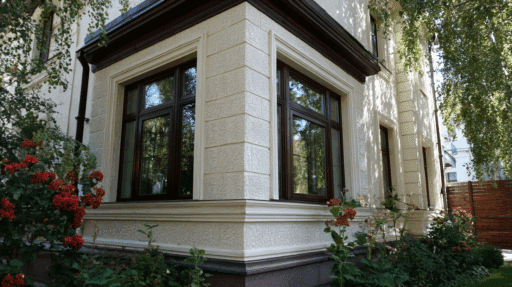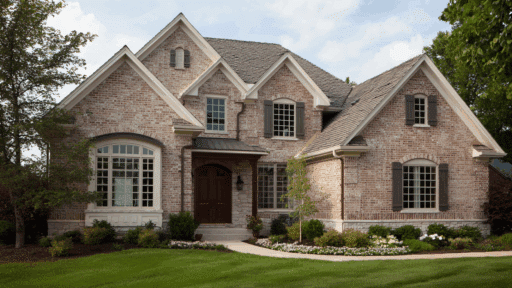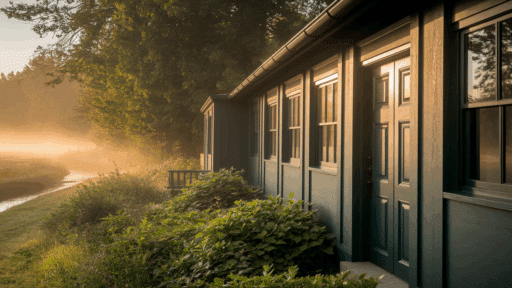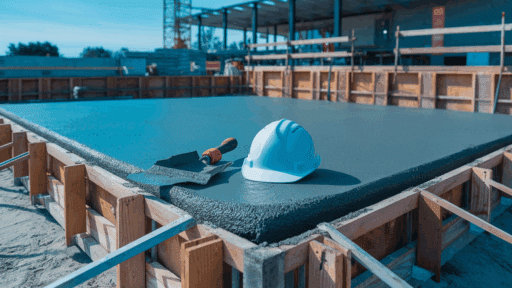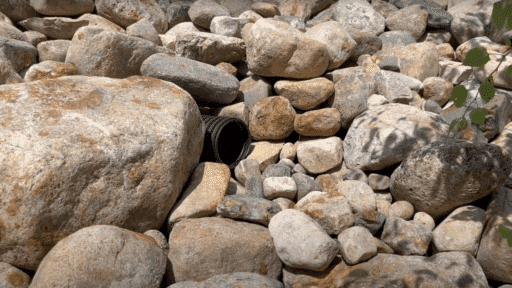Consider giving your home’s exterior a fresh makeover. You’re not alone! Thousands of questions are being asked about this exact topic.
Can you paint siding on a house? Browse any home improvement forum and you’ll find heated debates between success stories and complete disasters. Some homeowners share excellent five-year results, while others post photos of peeling paint after just months.
After analyzing numerous real-life experiences with the question, we’ve found the truth. Painting siding can give your home a new look and save thousands, but only when done correctly.
Get it wrong, and you’ll join frustrated homeowners asking, “Help! My paint is bubbling off!”. Let’s find what works based on real experiences from people who’ve tried it all.
Can You Paint Siding on A House?
Yes, you can paint most types of house siding, including vinyl, wood, fiber cement, and aluminum. It’s a cost-effective way to update your home’s appearance, but success depends on proper preparation and using the right materials.
The key is thorough surface preparation, which involves cleaning the siding, scraping loose paint, filling holes, and applying quality primer designed for your siding type.
You’ll need exterior-grade paint, brushes or sprayers, cleaning solutions, sandpaper, and caulk for gaps. Weather conditions matter too. Avoid painting in direct sunlight, extreme temperatures, or high humidity.
The process takes several days to complete correctly, allowing time for cleaning, drying, priming, and applying two coats. Rush the timeline, and you risk paint failure that leads to peeling and expensive do-overs.
Factors to Consider Before Painting House Siding
Consider giving your home’s exterior a fresh new look. Before you grab that paintbrush, several essential factors can make or break your siding painting project.
Many homeowners jump into painting without proper planning, only to face peeling paint or expensive do-overs within a few years.
1. Weather Conditions: Paint only when temperatures are between 50°F and 85°F and the humidity is low. Avoid rainy days or those with frost expected within 24 hours.
2. Siding Material Type: Different materials require specific paint types and preparation methods. Wood requires additional preparation, including sanding and priming, whereas vinyl and aluminium necessitate specialized primers for optimal adhesion.
Before asking, can you paint siding on a house, identify your siding material first to choose the right approach and products.
3. Surface Preparation: Clean the siding thoroughly and fix any damage before painting.
Remove loose paint, fill any cracks, and sand rough areas to ensure a smooth application. Proper prep work determines how long your paint job will last.
4. Paint Quality and Type: Use high-quality exterior paint designed for your specific siding material. Cheap paint may initially save money, but it often requires repainting sooner.
Many people wonder whether they can paint their siding with any paint, but choosing the right product makes all the difference in terms of durability and appearance.
5. Safety Equipment: Working at height requires proper ladders, scaffolding, and safety gear. Assess your comfort level with heights and consider hiring professionals for tall or hard-to-reach areas.
Never compromise on safety to save money on equipment or labor costs.
What Types of Siding Can Be Painted?
Not all materials are created equal when it comes to holding paint. Some love a fresh coat and will hold onto it for years, while others laugh at your paint and send it sliding right off.
Let’s break down what you’re working with!
1. Vinyl Siding
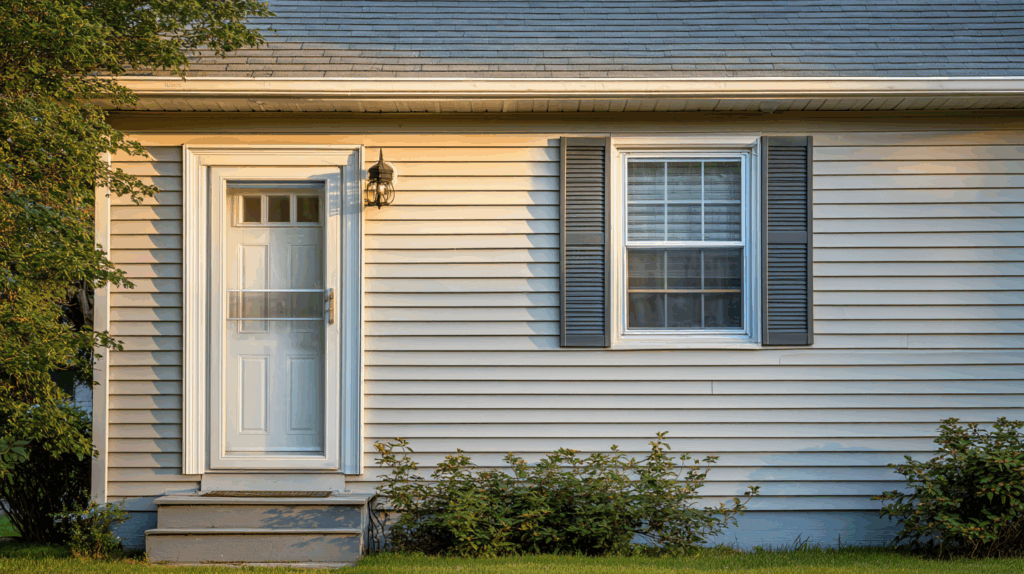
Vinyl siding is the go-to choice for millions of American homes, made from durable PVC plastic. If you’re wondering if you can paint siding on a house with vinyl, you’re in good company; this question pops up in forums daily!
The material expands and contracts with temperature changes, which can make painting challenging if you’re not familiar with the rules.
- Best paint type: 100% acrylic latex paint made for vinyl siding (Sherwin-Williams VinylSafe, Benjamin Moore Regal Select)
- Color restrictions: Light colors only (LRV of 55 or higher) to prevent warping
- Application tools: Good synthetic brush or 3/8″ nap microfiber roller
- Prep requirements: Clean with TSP and dry 24-48 hours before painting
For more discussion from real-time users, check this thread by r/HomeImprovement: “Can you paint vinyl siding and have it last?”.
2. Wood Siding
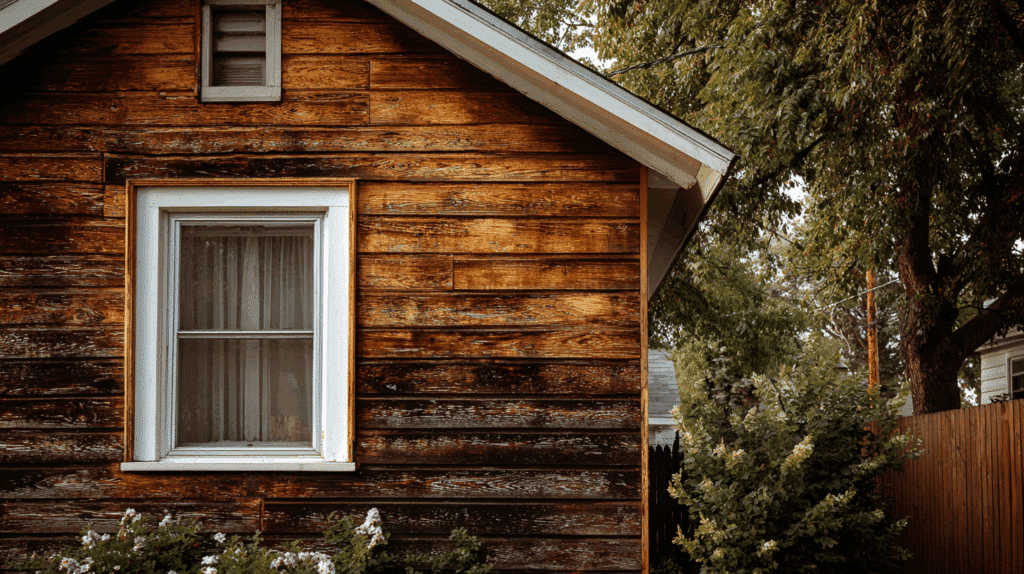
Wood siding brings timeless charm with options like cedar, pine, redwood, and oak.
Wood practically begs to be painted. Each wood type has its characteristics, with some having natural oils while others are more straightforward to work with.
- Best paint type: Top-grade 100% acrylic latex exterior paint (Benjamin Moore Aura, Sherwin-Williams Duration)
- Primer required: Oil-based or good acrylic primer, shellac-based for knots
- Application tools: Natural bristle brush for primer, synthetic for topcoat
- Prep work: Remove loose paint, ensure wood moisture below 15%
3. Fiber Cement Siding
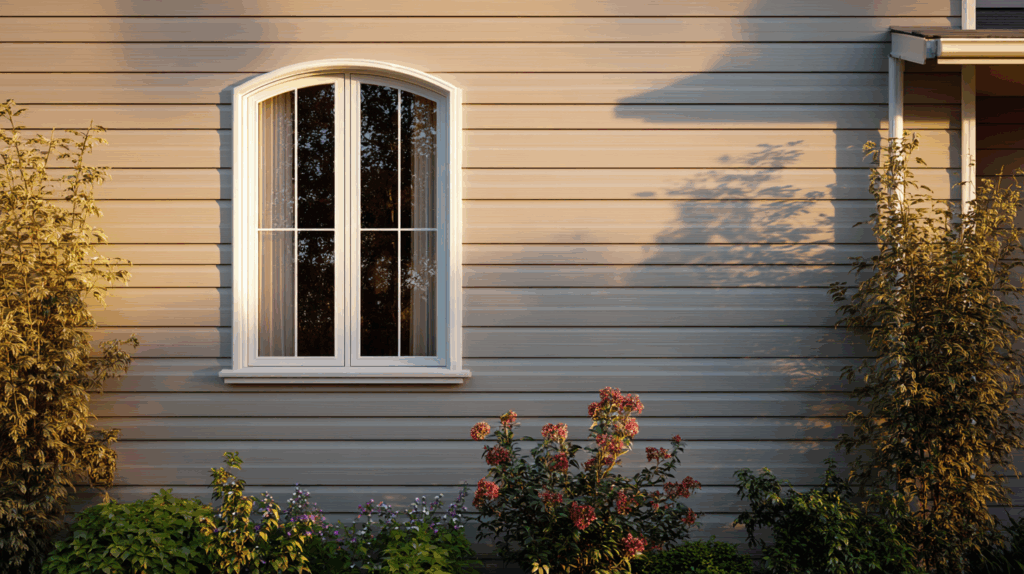
Fiber cement siding is a composite material composed of cement, sand, and cellulose fibers, creating a rigid, fire-resistant material.
This engineered siding resists fire, insects, and rot while holding paint exceptionally well, making it a dream for DIY painters.
- Best paint type: 100% acrylic latex exterior paint (most top-tier brands work well)
- Application freedom: Brush, roller, or spray all work effectively
- Coating system: Primer plus two finish coats for optimal results
- Color options: No restrictions on dark or light colors
4. Aluminum Siding
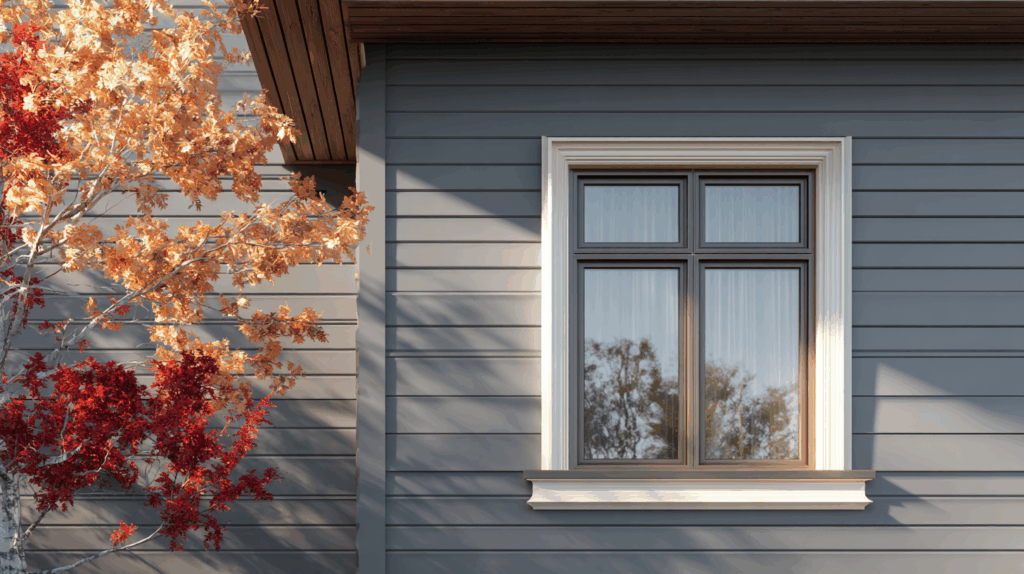
Aluminum siding had its heyday from the 1940s through the 1970s and still covers millions of homes.
This lightweight metal expands and contracts significantly in response to temperature changes, which can affect paint adhesion.
- Best paint type: 100% acrylic exterior paint with movement-friendly additives
- Prep tools: Wire brush for chalk removal, TSP cleaner for thorough cleaning
- Application method: A Good synthetic brush or airless sprayer works best
- Critical step: Remove all chalky oxidation completely before priming
5. Steel Siding
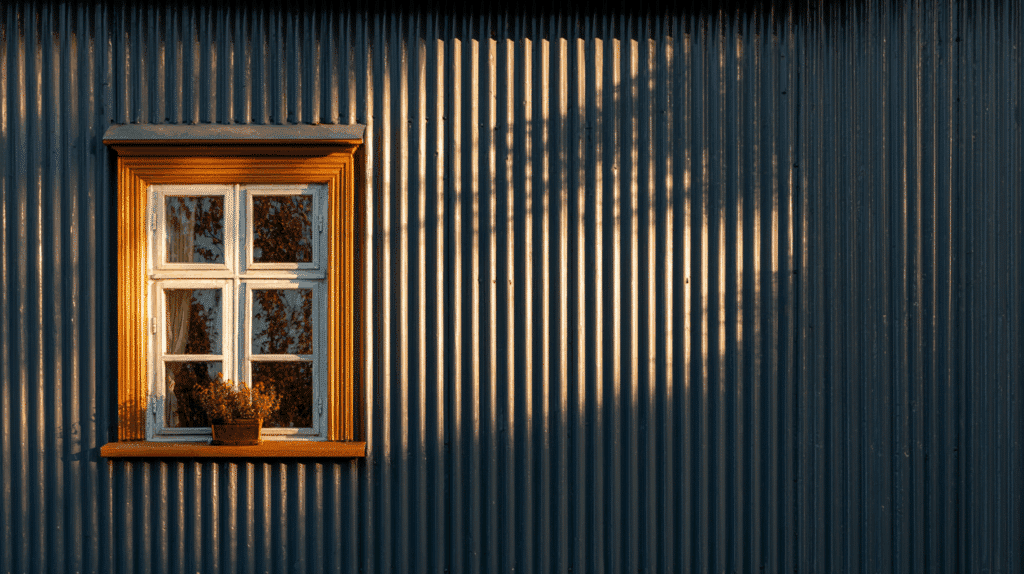
Steel siding is commonly used on homes in industrial areas or regions that experience harsh weather conditions.
This heavy-duty material is built to last, but its weakness is rust; any rust spots will continue to spread under the paint, eventually bleeding through to ruin your paint job.
- Best paint type: Direct-to-metal (DTM) acrylic paint with rust inhibitors
- Primer required: Rust-inhibiting primer applied immediately after cleaning
- Prep tools: Wire brushes, sandpaper, rust converter for problem spots
- Application tip: Multiple thin coats work better than a single thick application
6. Brick Siding
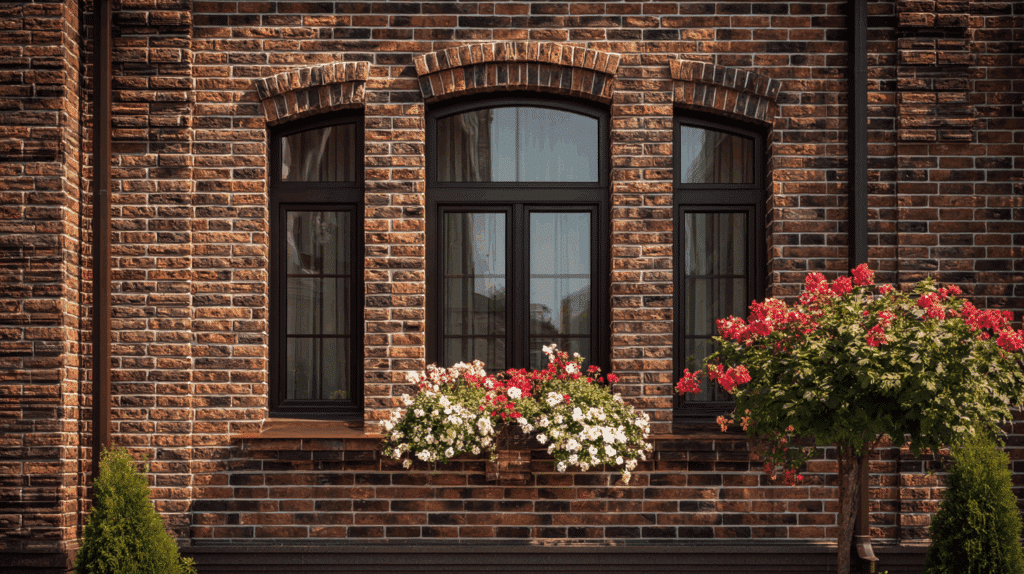
Brick siding is made from fired clay and naturally absorbs and releases moisture as seasons change.
This breathing ability keeps brick healthy over decades, but makes standard paint problematic since it can trap moisture and cause damage.
- Best paint type: Mineral-based paint, limewash, or breathable masonry paint only
- Application tools: Natural bristle brush for mineral paints, thick nap rollers for texture
- Important warning: Never use standard latex or oil-based house paints
- Expert advice: Get masonry consultation before proceeding with any brick painting
7. Stucco Siding
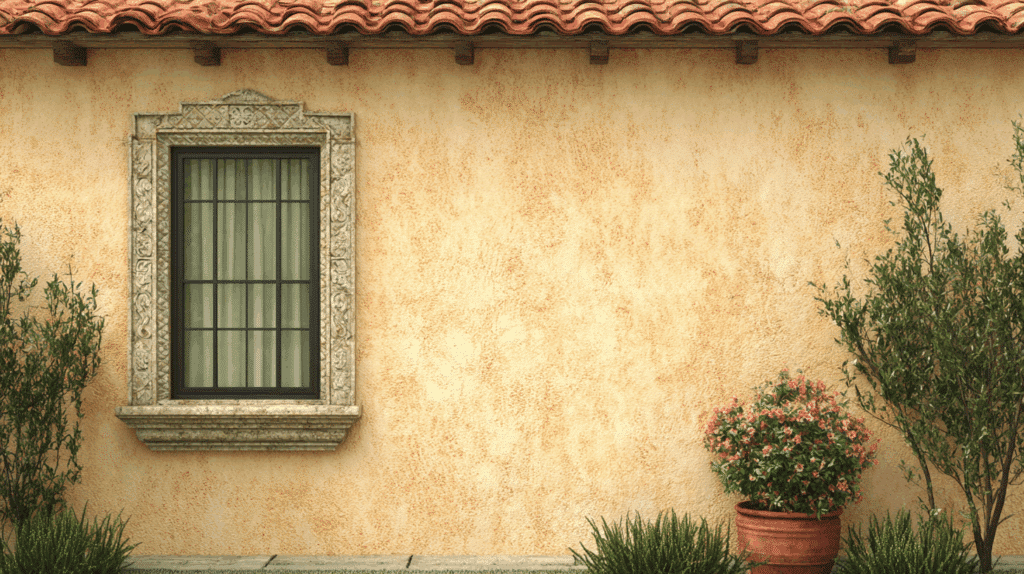
Stucco is that textured, cement-based finish applied over wire mesh, with textures ranging from smooth as glass to rough as sandpaper. The texture level determines how you’ll need to approach painting this material.
- Best paint type: 100% acrylic masonry paint or elastomeric paint for crack-prone areas
- Tool selection: 3/8″ nap roller for smooth, 3/4″ to 1″ thick nap for textured surfaces
- Spray technique: Back-roll sprayed areas on textured surfaces for even coverage
- Prep step: Pressure wash to remove dirt, mildew, and loose material
The Most Common Siding Paint Mistakes and Fixes
Is the paint on your home peeling, cracking, or looking dull? You’re not alone.
Paint problems can be frustrating, but most can be resolved with the right approach. Catching these issues early saves money and protects your home from severe damage.
Let’s examine the most common paint problems and learn precisely how to fix them.
- Peeling Paint: Paint chunks are falling off due to moisture and poor preparation. Before asking, can you paint the siding, scrape loose paint, sand, clean, prime bare spots, and then repaint?
- Chalky Surface: White powder when touched, from sun damage. Wash with soap, pressure wash, apply chalk-blocking primer, then quality paint.
- Paint Bubbles: Raised bumps from hot sun painting and moisture. Pop bubbles, fix moisture, clean, prime, and repaint.
- Paint Cracks: Lines letting water through from wood movement and age. Fill cracks with filler, sand smooth, prime, then apply flexible paint.
- Mildew/Mold: Dark patches from moisture and poor airflow. Mix bleach and water (1:3 ratio), spray, wait 15 minutes, scrub, rinse, and then apply mildew-resistant paint.
- Rust Stains: Orange streaks from rusty nails and gutters. Use rust remover, rinse, prime with rust-blocking primer, and replace rusty nails with stainless steel.
What’s the Real Cost to Paint Your House Siding?
The total for an average home falls between $3,000–$8,000 for mid-size (1,500–2,000 sq. ft.) houses, though larger homes or additional stories can push this closer to $10,000–$12,000.
Professional contractors usually charge $1.50 to $4.00 per square foot, while DIY projects can reduce costs to $0.50 to $1.50 per square foot for labor and materials combined.
| Siding Type | Total Cost Range | Cost Per Square Foot | Special Requirements |
|---|---|---|---|
| Aluminum Siding | $2,000 – $6,000 | $1.50 – $2.50 | Easiest to paint |
| Vinyl Siding | $2,500 – $7,000 | $1.75 – $3.00 | Requires special paint |
| Steel Siding | $2,800 – $7,500 | $2.00 – $3.25 | Needs rust-resistant primer |
| Stucco | $3,000 – $8,500 | $2.25 – $3.75 | Texture requires more paint |
| Wood Siding | $3,500 – $10,000 | $2.50 – $4.00 | Needs more prep work |
| Fiber Cement | $4,000 – $12,000 | $3.00 – $4.50 | Premium materials required |
| Brick | $4,500 – $13,000 | $3.25 – $5.00 | Porous surface uses more paint |
Additional Expenses: Power washing costs $200-500, primer runs $300-800, and paint costs $400-1,200 based on quality.
If you do it yourself, renting ladders and sprayers adds $150-400. Fixing damaged siding before painting can add $500-2,000 to your total.
Money-Saving Tips: Get quotes from several contractors to compare prices. Plan your project for fall or winter when contractors offer lower rates.
Do simple cleaning and prep work yourself to save on labor costs. Buy paint in larger quantities and choose good mid-range options instead of the most expensive brands.
NOTE: The low and high estimate ends can fluctuate depending on the region and house specifics.
The Bottom Line
Painting house siding can save thousands, but success depends on proper prep work. The answer to Can you paint siding on a house is yes, but only with the correct technique.
Most failures occur when preparation is skipped or the wrong products are used. Before asking about painting the sidings yourself, ensure you have the right tools and knowledge.
The difference between a 15-year job and a 3-year disaster lies in preparation and the quality of materials.
When people ask, can you paint siding successfully, the proper technique is key.

